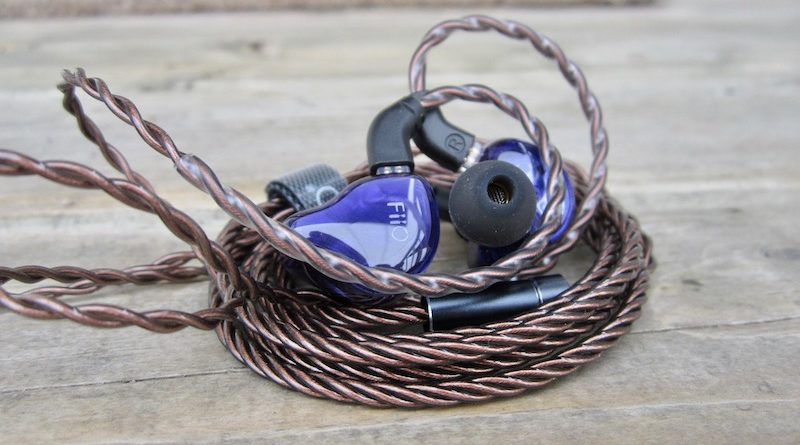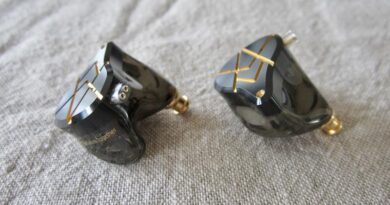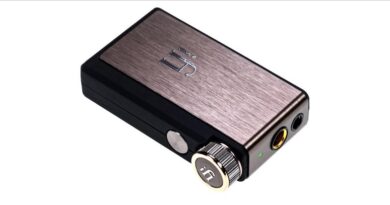FiiO FH1s Review – Another (Too) Perfect Day
Pros — Well composed low end; no recessed mids; great clarity; excellent staging, imaging, and resolution; accessories; value.
Cons — BA timbre with very fast transients.

EXECUTIVE SUMMARY
The FiiO FH1s is a very clean and crisp sounding, close to neutrally tuned, analytical earphone with impressive resolution and staging but a somewhat clinical timbre.

INTRODUCTION
FiiO (est. 2007) is a Chinese company that made themselves a name with good quality, affordable portable amps for iPods and iPads. In 2013, I purchased their now classic E12 Montblanc amp that plugs directly into the ipod/ipad’s 16-pin port. And while it is still running strong, FiiO have diversified into bluetooth and accessories, and they have, among others, produced some popular high-quality earphones. The FiiO FH1s is a development of their FH1 model and is their currently lowest priced model at $69. The company claims that FH1s features a “revealing bass, astonishingly clear mids and high, and truly lush vocals”. We’ll find out in a minute whether this is true.

SPECIFICATIONS
Drivers: 1 Dynamic (13.6 mm) and 1 Balanced Armature (Knowles 33518)
Frequency Response: 5 Hz – 40 Hz
Sensitivity: 106 dB (@1 mW)
Impedance: 26 ohm
Tested at: $70
Product Page: https://www.fiio.com/fh1s
Purchase Link: HifiGo

PHYSICAL THINGS AND USABILITY
The FiiO FH1s features a relatively large 13.6 mm dynamic driver and a Knowles balanced armature driver. The accessories are truly generous with the content coming in a high-quality waterproof acrylic box. As you see in the picture, there are two different sets of silicone tips (S/M/L), and one pair of foam tips. I found the largest of the black silicone tips produced the best sound for me, the grey ones with the red interior were a bit boomy to my ears.


The cable is connected via 2-pins with 0.78 mm spacing, it feels smooth and supple, and is just fine for my purpose. The shells are made of resin with some special celluloid faceplate, they are relatively thick (because of the dynamic driver) however light, and they appear to be well built. The whole assembly looks and feels as crisp and clear as it sounds.
Despite their size, the earpieces are very comfortable, the seal is good, and they are easily driven with my iPhone SE. I also used my MacBook Air with the Earstudio HUD100 (review coming soon) for my analysis.

TONALITY AND TECHNICALITIES
My tonal preference and testing practice

The FiiO FH1s have a very clean, very homogenous, almost sanitized sound.
The bass is very linear, not too punchy, tight, composed, and the extension into the sub-bass is average. Overall, the low end is not overwhelming one’s eardrums but is rather realistic. A very clean and well-dosed low end. Very good!
Midrange vocals well sculptured, crystal clear, clean, a bit lean, breathy, and pointy (from the overtones handed down from the upper midrange peaks). Can be a bit harsh at higher volumes. The midrange clarity/transparency is amazing.
Treble is well extended, cymbals come in very clear, resolution at the upper end is also very good.
Imaging is excellent and so is speech intelligibility. Soundstage is wide and has a good depth, it is quite holographic and airy, with very good spatial cues. If you look at the soundstage as a room, then each element in that room, as well as the walls, are exactly and precisely defined. The distance between the elements can be easily measured with our ears. And the windows are open to let a breathe of air in. But this also brings problems with it. Separation and layering are excellent for this category. Note definition is great, too.
So what is the caveat? Something many will not even notice: the timbre! The sound of the FiiO FH1s is not the most organic one. It comes across as digital, like a CD player (and not like a record player or tape, such as in a single dynamic driver earphone). This does not matter for electronic music but it does for string quartets. Attack/decay are simply too fast throughout much the frequency range which makes the sound unrealistic. A piano sounds artificial and cymbals sound plasticky. Vocals could be more organic. The bass is not affected. This can be to some extent remedied by using a warm amp such as the ifi Nano BL, ifi Hip Dac, or the “analog” filter in the Earstudio HUD100.
On the other hand, this timbre works well for electronic music. I am getting used to the artificial timbre quickly, but this needs to happen every time I put them into my ears.


FIIO FH1S COMPARED
The $79 Tin Hifi T4 has a shallower soundstage, a bit more bass, lesser technicalities (stage, resolution), but it is more organic sounding. The $79 KBEAR Diamond single DD earphone is in stark sonic contrast with its strong bass and its organic timbre but lesser separation and layering capabilities. Clearly different strokes for different folks. You find several reviews of each on this blog [link]. In terms of imaging and resolution, I could not find anything as good in this price range.


CONCLUDING REMARKS
In summary, the FiiO FH1s is like a high-resolution digital photo: super sharp, crisp colours, impressive, but overpixelated and therefore somewhat unrealistic for the purist – the old 35 mm slide, while nowhere near perfect, may appeal more to many eyes because of the more natural reproduction.
This is the good old glass half full/half empty situation: you get a lot of technical capabilities (and accessories) for $70 – even factoring in the cons. It is amazing how much prices have come down in recent years. Fans of electronic noise, pop, and rock will frolic, but purveyors of classical music, folk, and jazz, may have to get their ears used to the FH1s’ “exactness”. As always in life, every bright light comes with a strong shadow. In the end, it comes down to personal preference.
I expect the FiiO FH1s to attract a huge following.
Until next time…keep on listening!

You find an INDEX of all our earphone reviews HERE.

DISCLAIMER
The FiiO FH1S were provided unsolicited by HifiGo – and I thank them for that. You can find them at the HifiGo store.
Our generic standard disclaimer.
You find an INDEX of our most relevant technical articles HERE.











